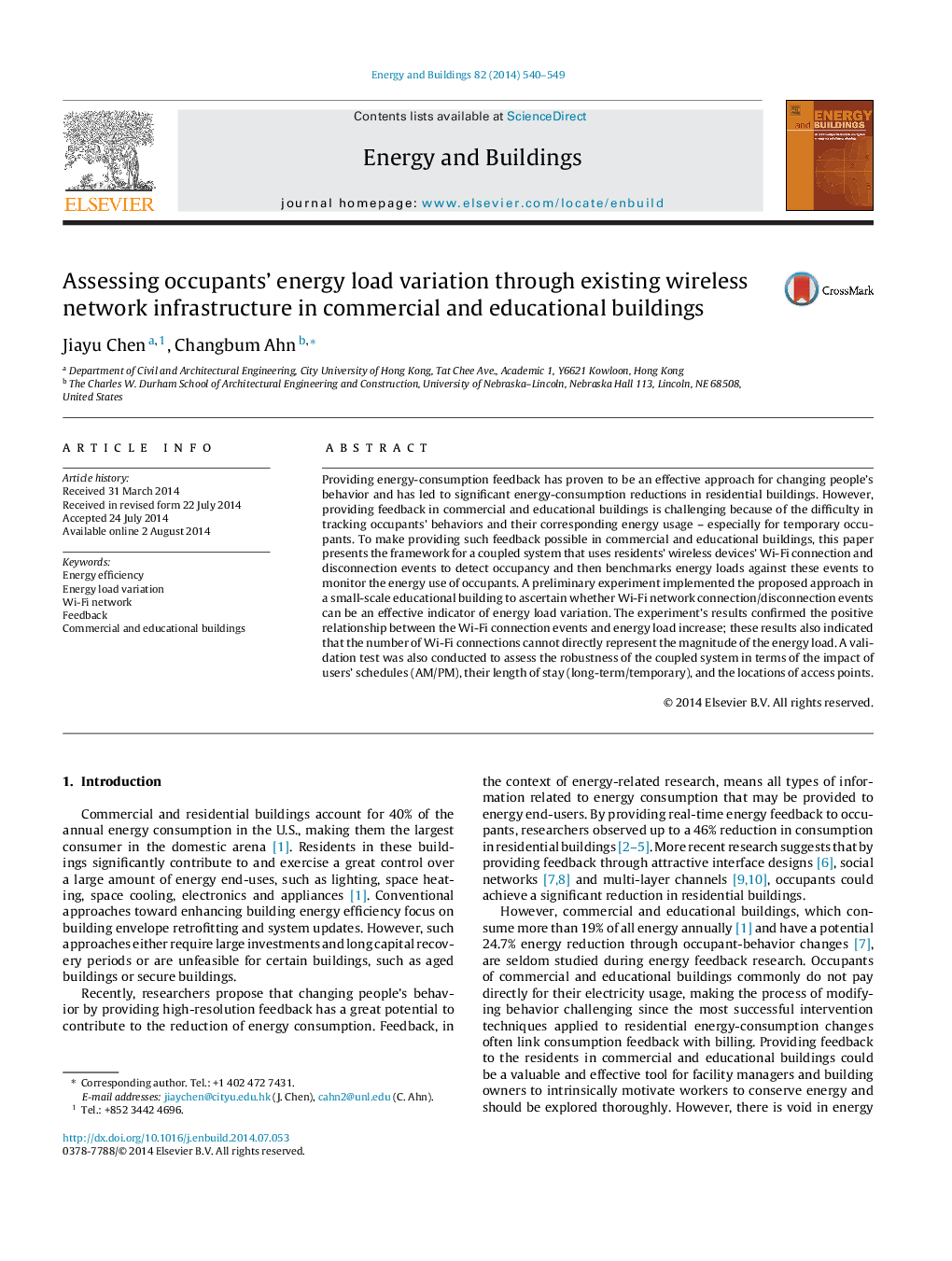| کد مقاله | کد نشریه | سال انتشار | مقاله انگلیسی | نسخه تمام متن |
|---|---|---|---|---|
| 262695 | 504047 | 2014 | 10 صفحه PDF | دانلود رایگان |

• We examine the validity of Wi-Fi events as an indicator of energy load changes.
• The Wi-Fi connection events have a positive relationship with energy load increase.
• The number of Wi-Fi connections has no direct correlation to building energy load.
Providing energy-consumption feedback has proven to be an effective approach for changing people's behavior and has led to significant energy-consumption reductions in residential buildings. However, providing feedback in commercial and educational buildings is challenging because of the difficulty in tracking occupants’ behaviors and their corresponding energy usage – especially for temporary occupants. To make providing such feedback possible in commercial and educational buildings, this paper presents the framework for a coupled system that uses residents’ wireless devices’ Wi-Fi connection and disconnection events to detect occupancy and then benchmarks energy loads against these events to monitor the energy use of occupants. A preliminary experiment implemented the proposed approach in a small-scale educational building to ascertain whether Wi-Fi network connection/disconnection events can be an effective indicator of energy load variation. The experiment's results confirmed the positive relationship between the Wi-Fi connection events and energy load increase; these results also indicated that the number of Wi-Fi connections cannot directly represent the magnitude of the energy load. A validation test was also conducted to assess the robustness of the coupled system in terms of the impact of users’ schedules (AM/PM), their length of stay (long-term/temporary), and the locations of access points.
Journal: Energy and Buildings - Volume 82, October 2014, Pages 540–549